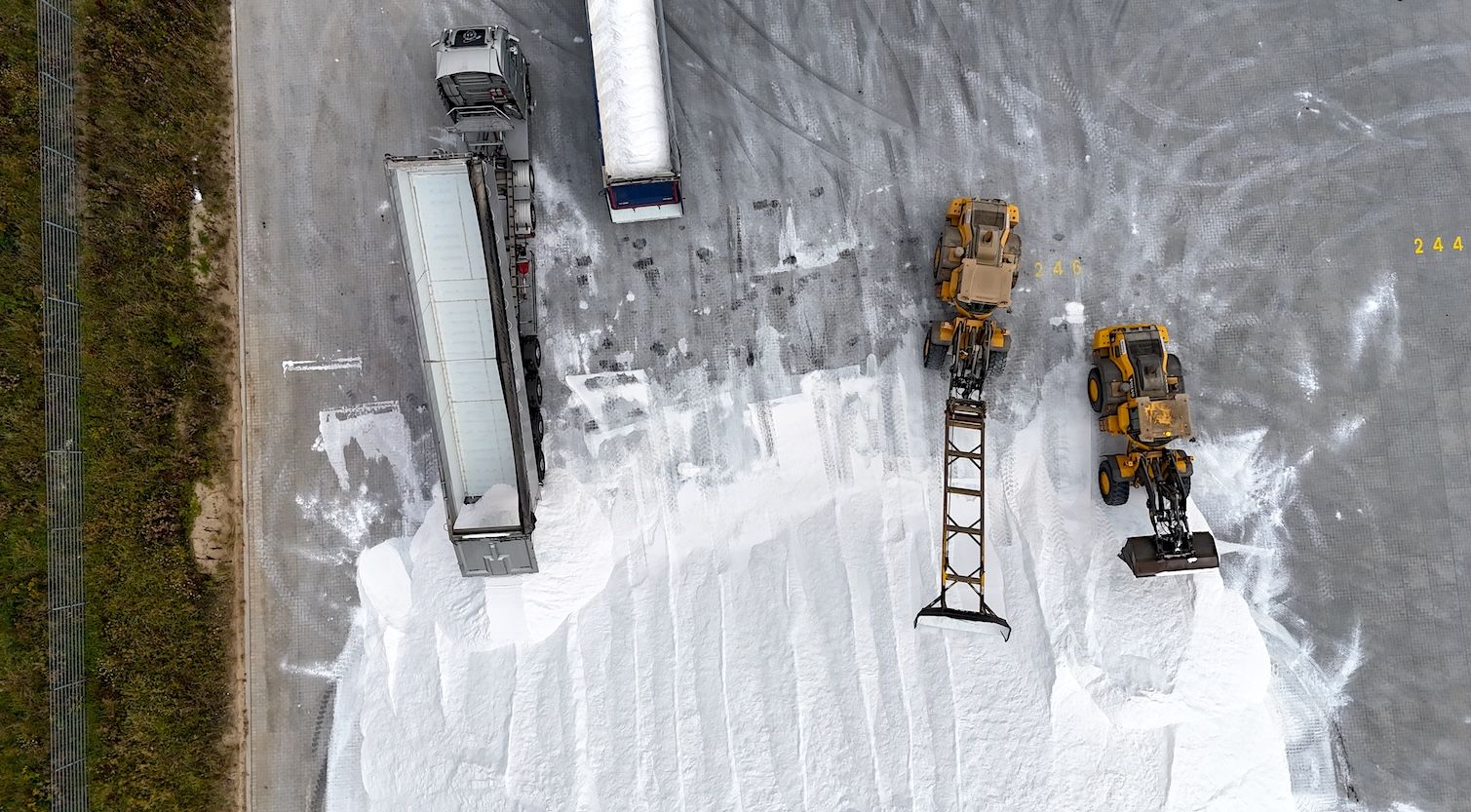How to store Calcium Chloride?
Calcium Chloride should be stored in a dry place, preferably under cover. The bags you receive from us are waterproof and can withstand being stored outdoors in the cold, but we recommend keeping them dry indoors to maintain the best possible quality of the product over time. Calcium Chloride should ideally be kept away from direct sunlight.
Here is our selection of calcium chloride for ice removal and calcium chloride for dust binding.
Storage of opened bags
To avoid hardness and clumps, large bags should be used once opened. If necessary, try to seal the bag to prevent moisture but avoid prolonged storage.
How to deal with salt clumping?
Calcium chloride can be used even if clumps have formed. A helpful tip is to try lifting the bag one meter above the ground with a forklift and drop it onto a hard surface. This can help break up clumps in the bag. If you happen to have a very large clump in one or more bags, it can be dissolved in water and applied as a liquid.
What are the advantages and disadvantages of large vs. small bags?
Large bags are recommended when treating large areas and the product needs to be spread using a spreader/machine. Large bags are also more cost-effective than small bags.
The disadvantage of large bags is that we recommend using the entire bag once opened to prevent the product from absorbing moisture and becoming hard. Regarding 25 kg bags, they work well for smaller areas and are more manageable. For winter use, 25 kg bags of calcium chloride are very effective for thawing ice when the temperature is below -5 degrees Celsius.
When is the best time to apply Calcium Chloride?
In spring/summer, the product is best applied when there is moisture in the soil/gravel, preferably after recent rainfall. Alternatively, you can spread the product and moisten afterward, but we recommend applying it to damp ground before spreading.
The reason for this is that the chlorides in the salt have a unique ability to absorb moisture, which is the main reason why the salt works so well for dust suppression and road maintenance in both summer and winter.
Learn more about why you should choose calcium chloride for dust binding and snow melting here.
When is Calcium Chloride most effective in winter?
To effectively treat ice on winter roads, calcium chloride is the best product on the market. It works all the way down to -40 degrees Celsius and will remove thick layers of ice very quickly. Calcium Chloride is popularly used on sidewalks, in courtyards, on stairs, and at entrances. The product is also frequently used on surfaces such as slopes, slate, and other areas that require gentler treatment than regular road salt.
Can I use Calcium Chloride in a spreader?
Yes, the product should be spread using a spreader for larger stretches. Even on smaller stretches, we recommend a spreader to ensure even application on the road. Calcium Chloride has a density of 0.835 g/cm3.
How much Calcium Chloride should be estimated per kilometer?
Our recommendation is 800 kg per kilometer (5 meters wide) of road.
Do you have questions about Calcium Chloride?
Contact us hee, and we will answer any questions you may have!








